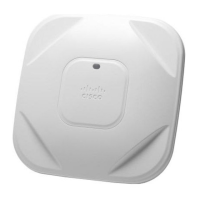CHAPTER 13
Frequently Asked Questions (FAQ's)
1
What are the differences between the AP 2800 and AP 3800?
The AP 3800 has the following features that are not available on the AP 2800:
•
mGig
•
Option module support
•
RF filters and cellular coexistence and module RF isolation
•
Local DC power connector
•
Available as optional 3800P version for outdoor and stadium applications
2
What are the benefits of a Flexible Radio Architecture?
Most sites have plenty of 2.4–GHz coverage, so using FRA means fewer physical APs need to be deployed
as the dual 5–GHz radios can replace installations that previously required two APs.
•
Flexible Radio Assignment
◦
Allows for the additional XOR radio (if desired) to function similarly to a WSM module (off
channel scanning) while primary 5–GHz radio services clients
◦ Reduces installation costs as a single AP can now support two 5–GHz radios (fewer APs,
better aesthetics). This can provide flexibility in architectural designs and can reduce the
number of needed Ethernet drops
◦
Can increase accuracy of location based devices, and client can roam from Micro to Macro
cell on same AP
◦ Primary 5GHz radio can service clients, while the secondary 5–GHz radio can be used to
enable testing of wider 160 MHz and/or newer channels as they become available – allowing
new features without limited performance
◦
Allows for RF network separation (example: guest access on one radio, corporate access on
the other)
•
Flexible radio, antenna, and options using integrated antenna “I” series models
◦
One radio can be set up for HDX Micro cell and second radio setup for a Macro cell
◦
Both radios can be configured for HDX type coverage ( Micro / Micro ) cell
Cisco Aironet Series 2800/3800 Access Point Deployment Guide
59

